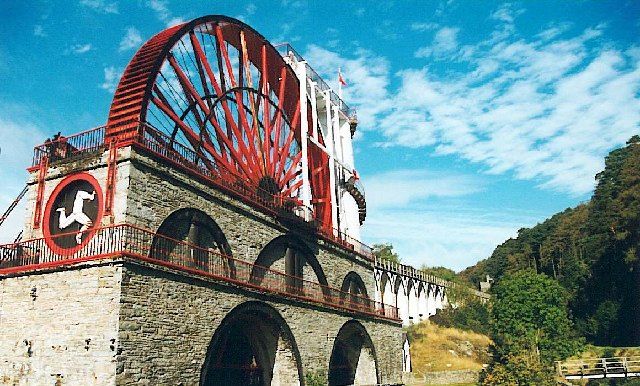
Lady Isabella – the Laxey Wheel
© Copyright Bob Jones and licensed for reuse under this Creative Commons Licence
Work here began around 1770 when a shallow level was driven into the vein. This was followed in 1797 by what became the main haulage and lowest drainage level (adit).
The sinking of Engine Shaft began in 1820, and this reached an eventual depth of about 455 metres below the adit. Welsh Shaft, about 100 metres up the glen, was sinking by 1840. The mine was showing promise 1845 and dressing floors were soon built at the head of Laxey village.
The ore was also improving with depth and in 1854 the Lady Isabella waterwheel, named after the Governor’s wife, was set to work pumping from the Engine Shaft. Output continued to rise, and it 1864 it surpassed 1000 tons of lead ore. In the same year, when copper was also being produced, the mine raised 5356 tons of zinc ore!
Even further up the glen, near the hamlet of Agneash, Dumbell’s and Agneash shafts had also found good ore. Workings from the former shaft eventually reached a depth of 552 metres below adit. The men were climbing to such depths using ladders so, to save them time and effort, a man engine was placed in Welsh shaft in 1881. It did not begin work until March 1883, however.
Despite a run of low lead prices from the 1870s, output held up until 1892, when it fell below 1000 tons for the first time since 1864, but zinc production remained strong. The mine survived World War I, but the death of 31 men through the breakage of a beam on the man engine at Levant Mine, in Cornwall, led to the closure of the one in Welsh shaft. Faced with long climbs to and from their work, the men went of a strike which lasted three years until a new owner took over. From then on the deeper levels were allowed to flood and a much reduced workforce gleaned available ore until closure in 1934.
Return to previous page
